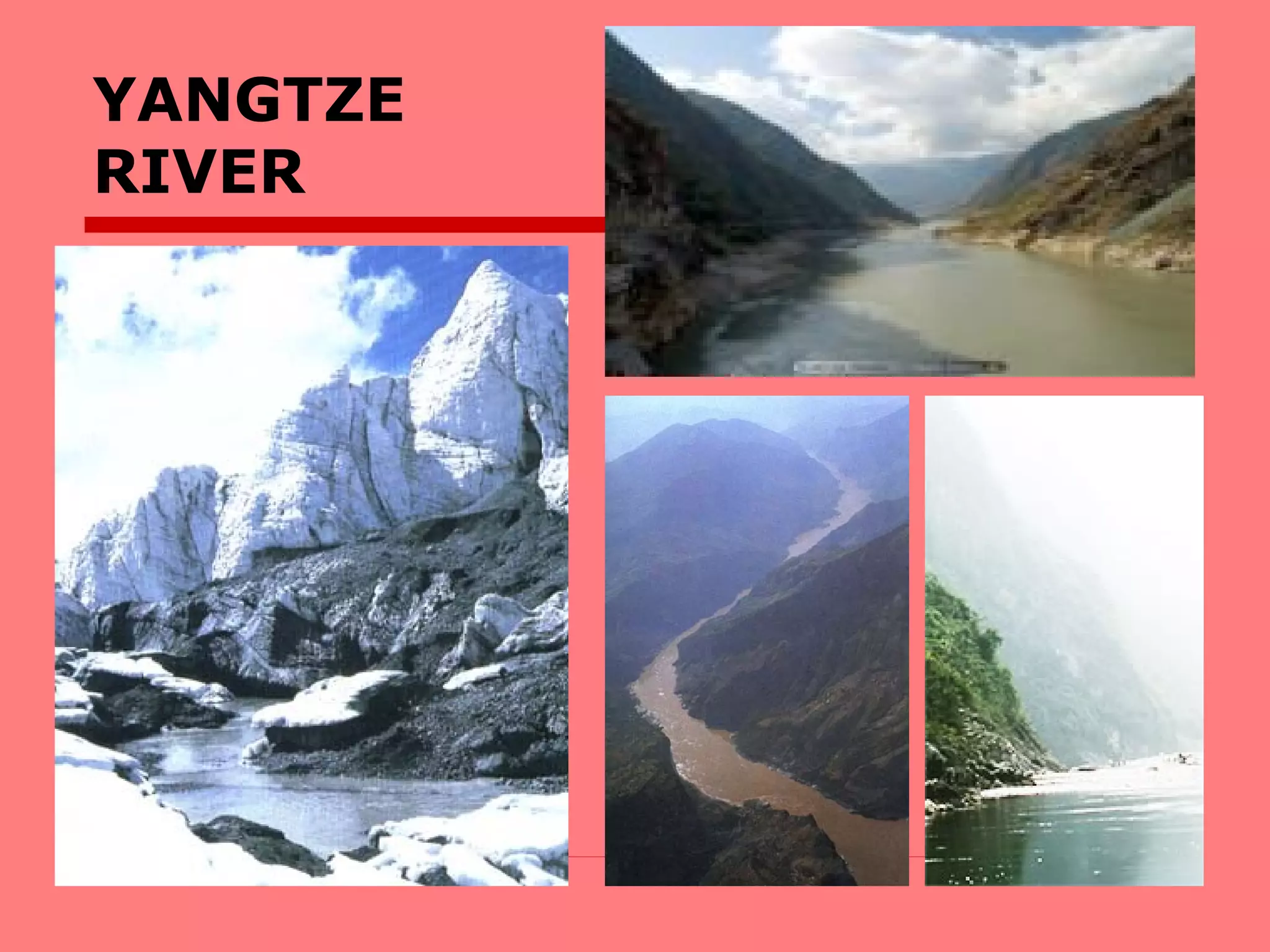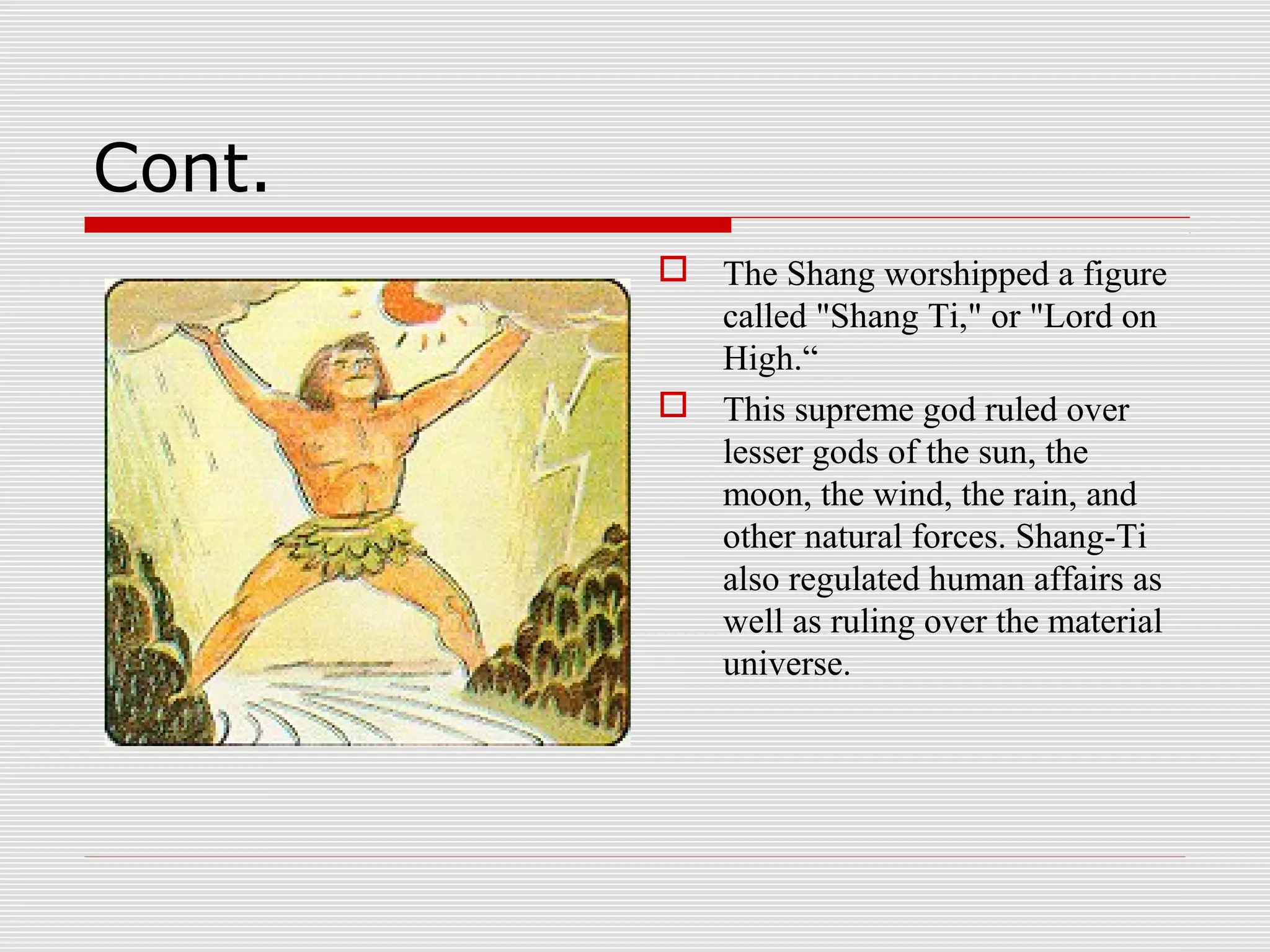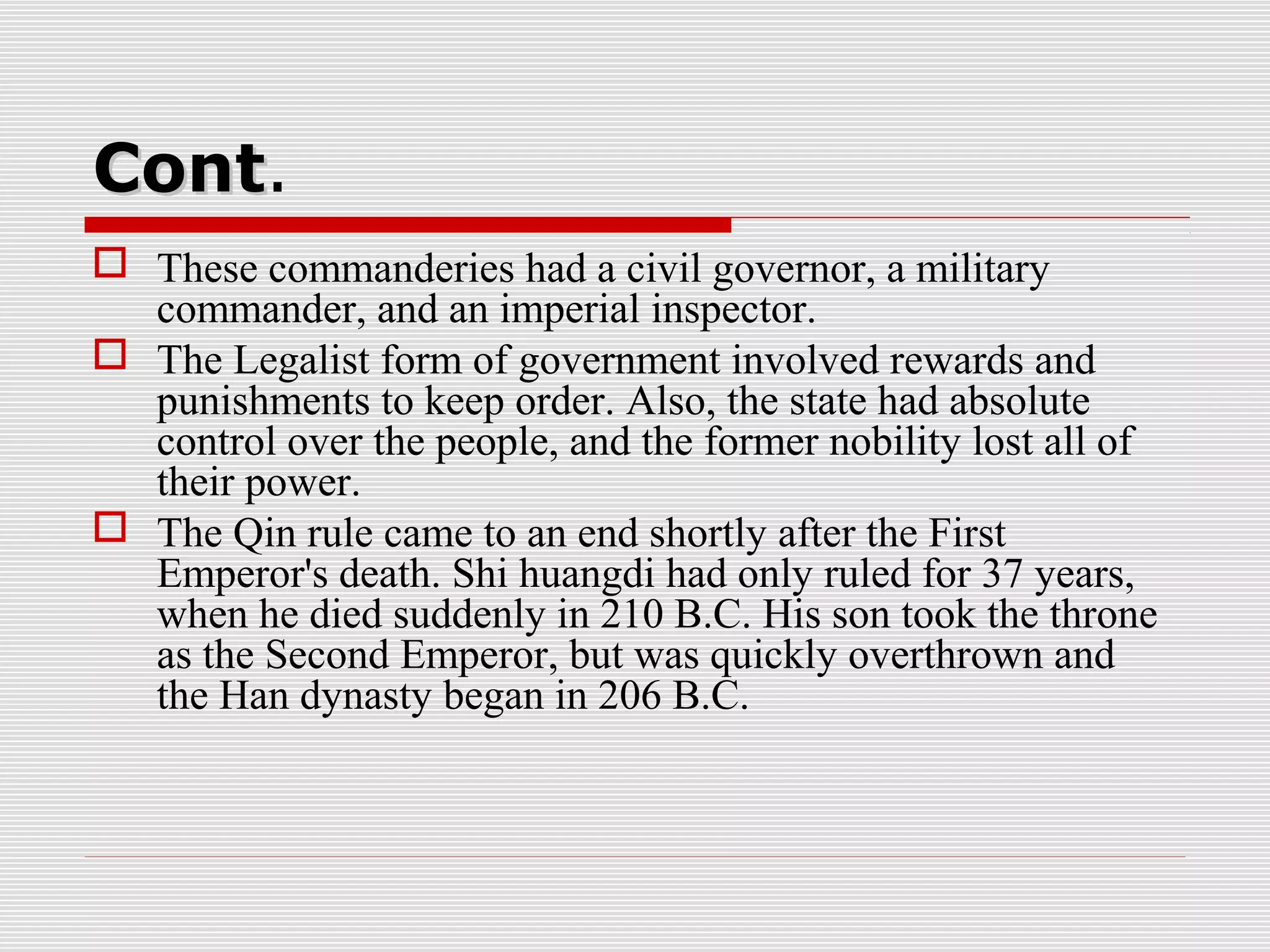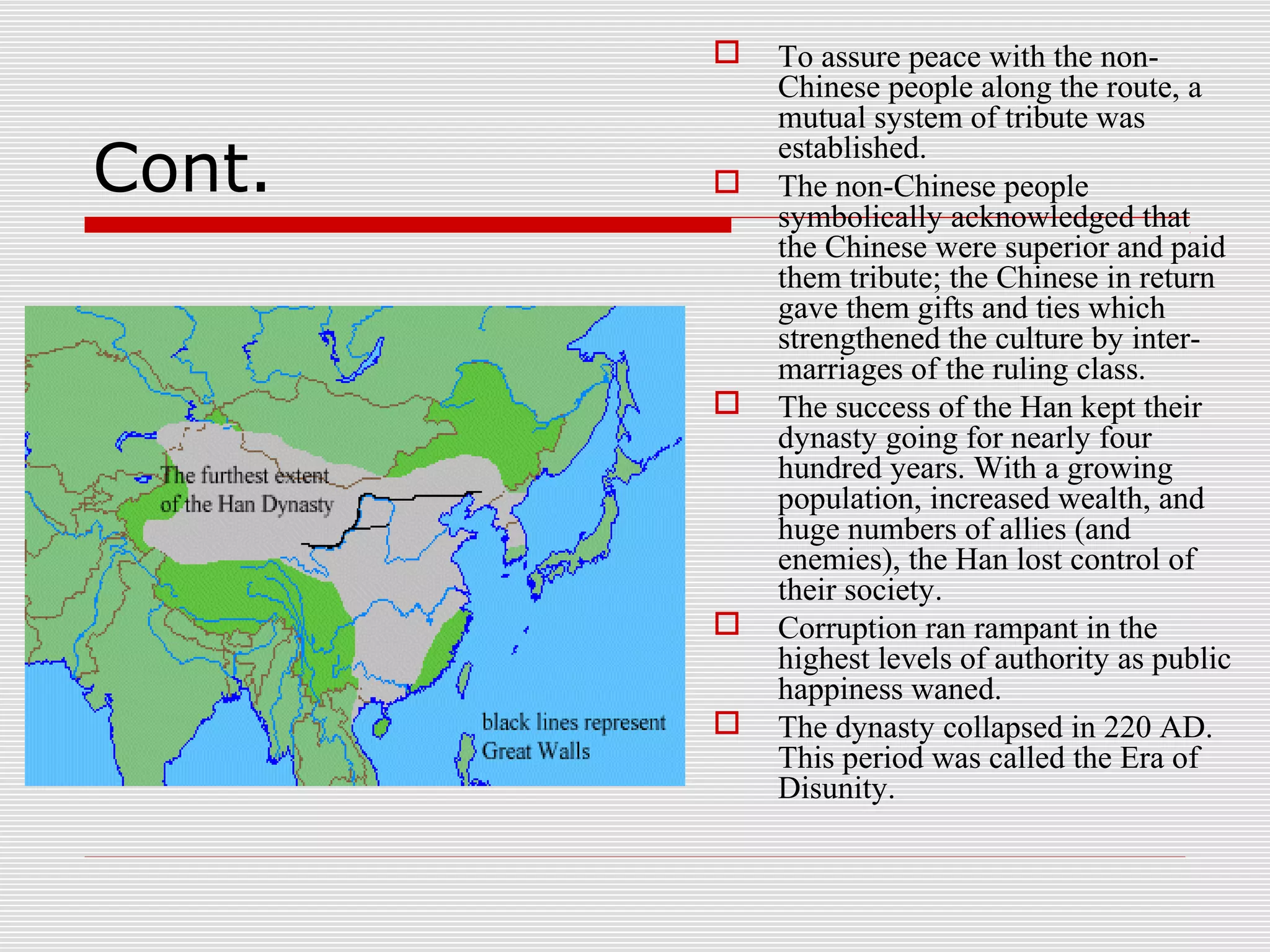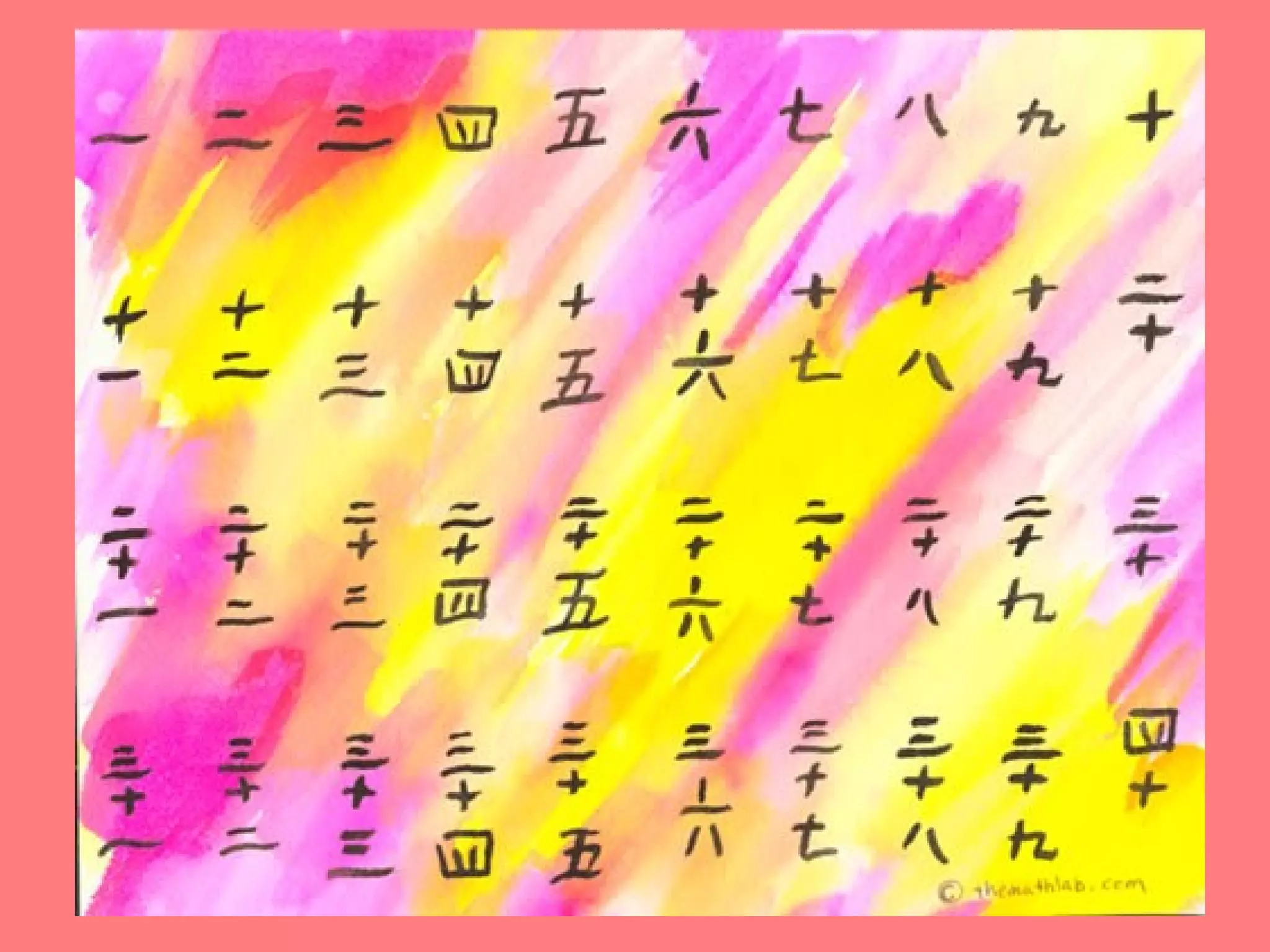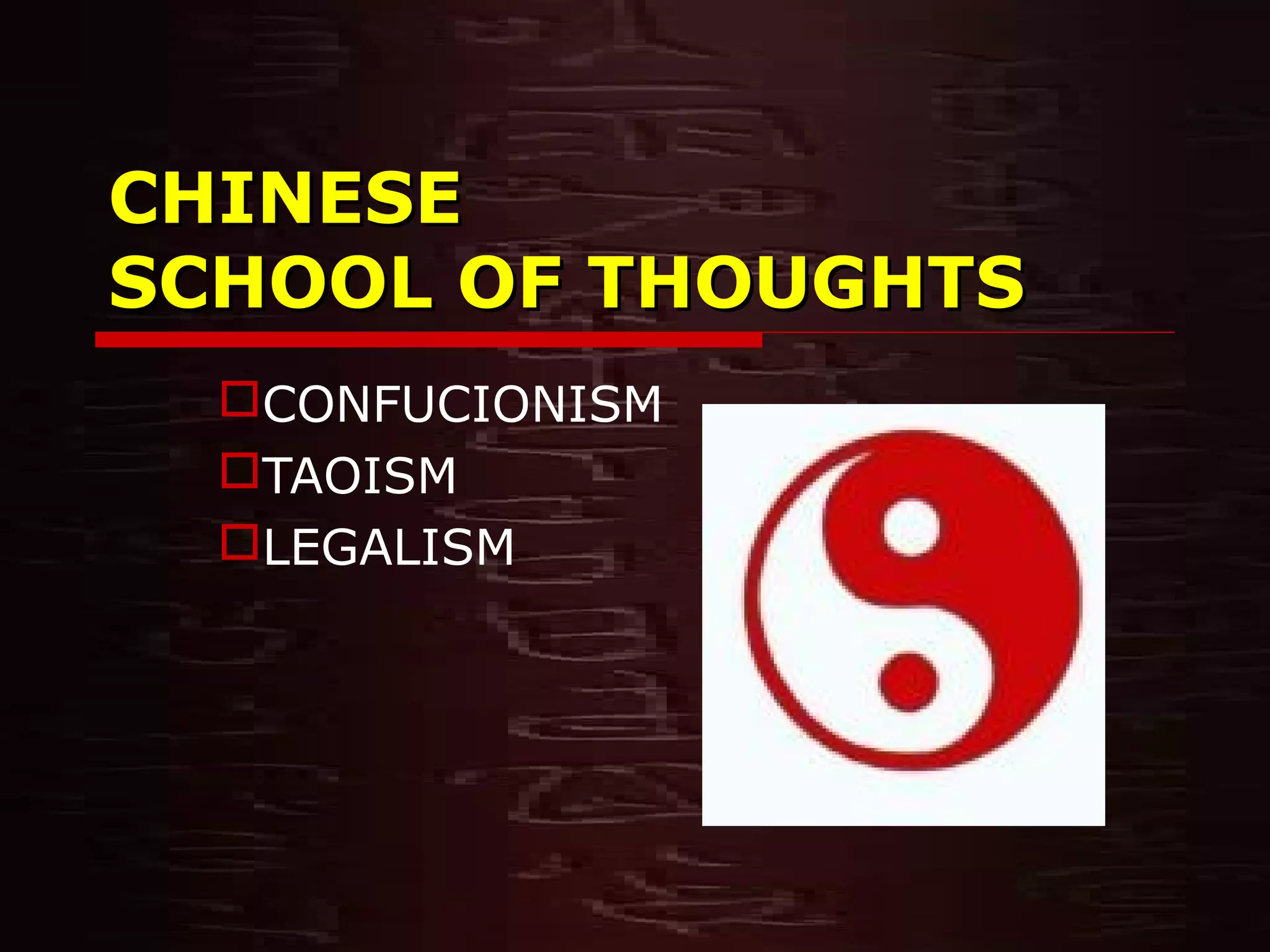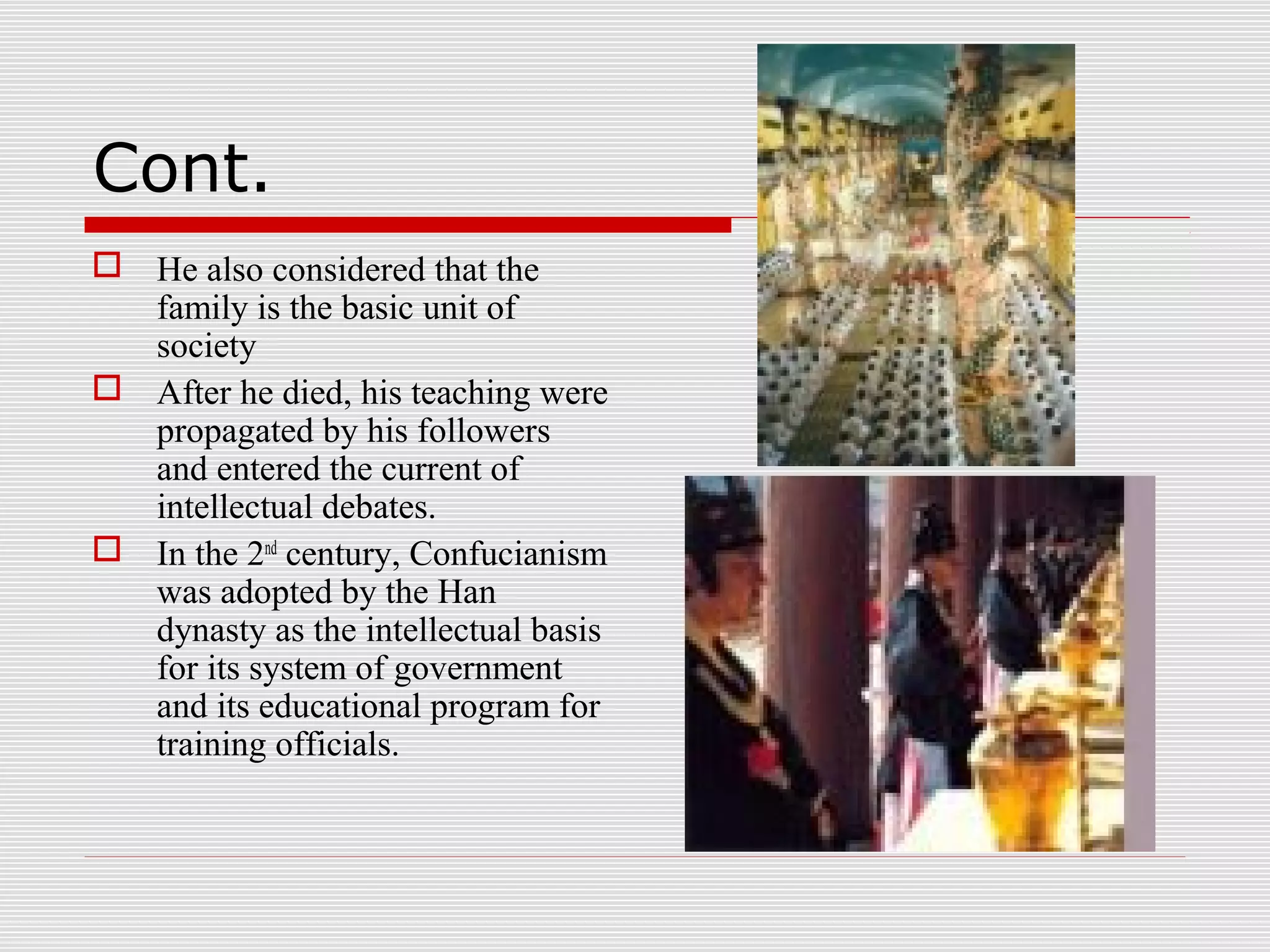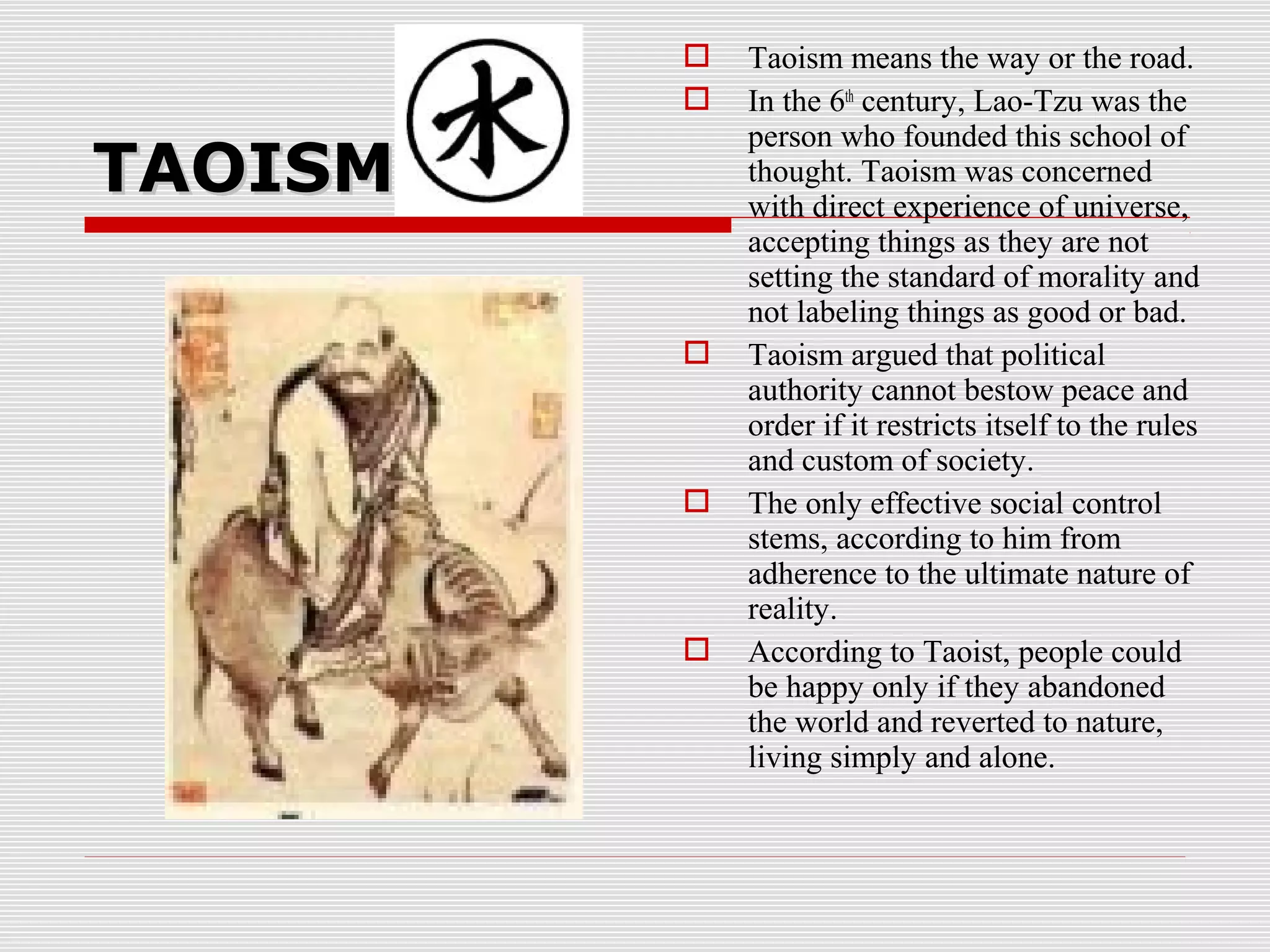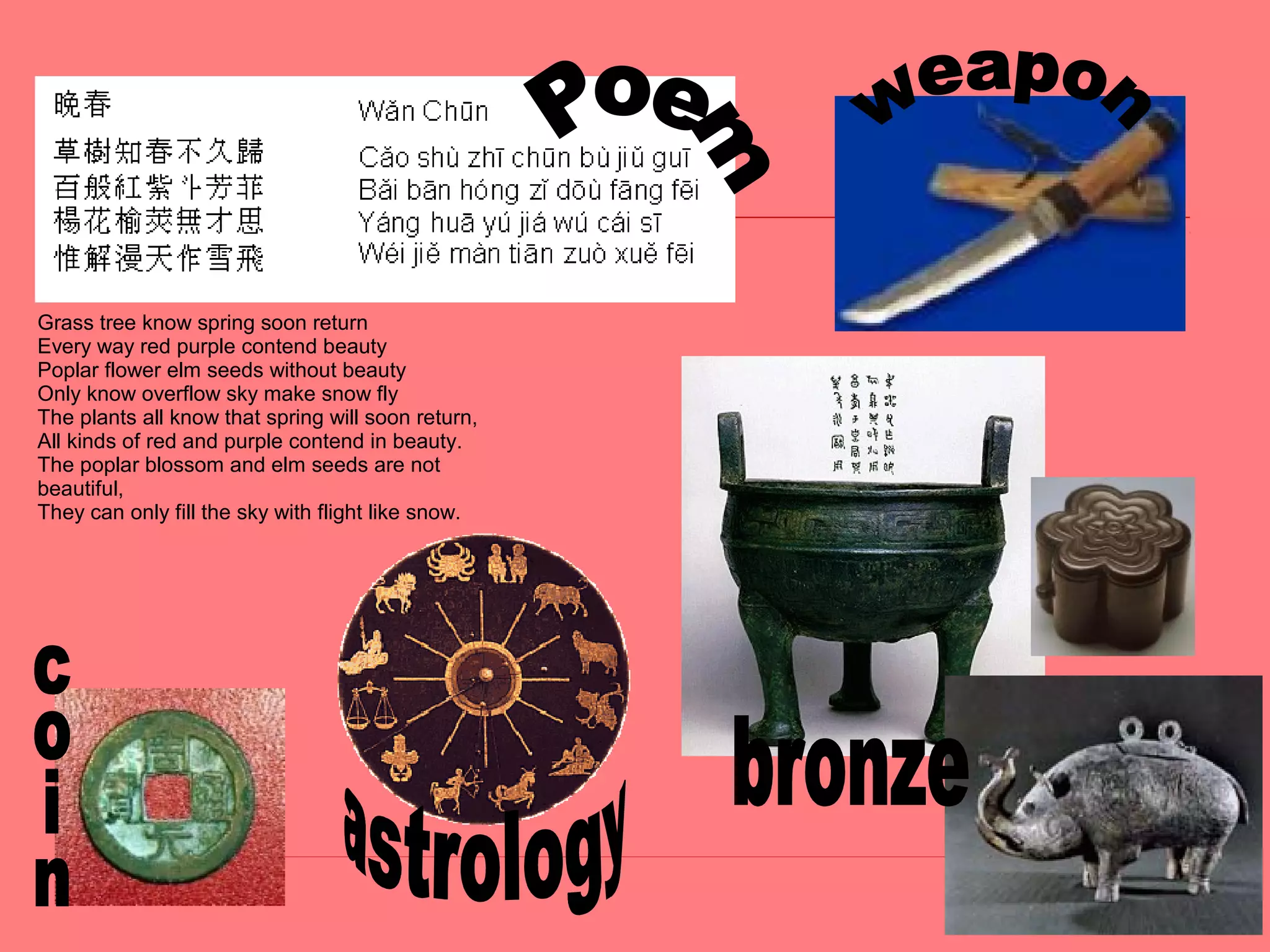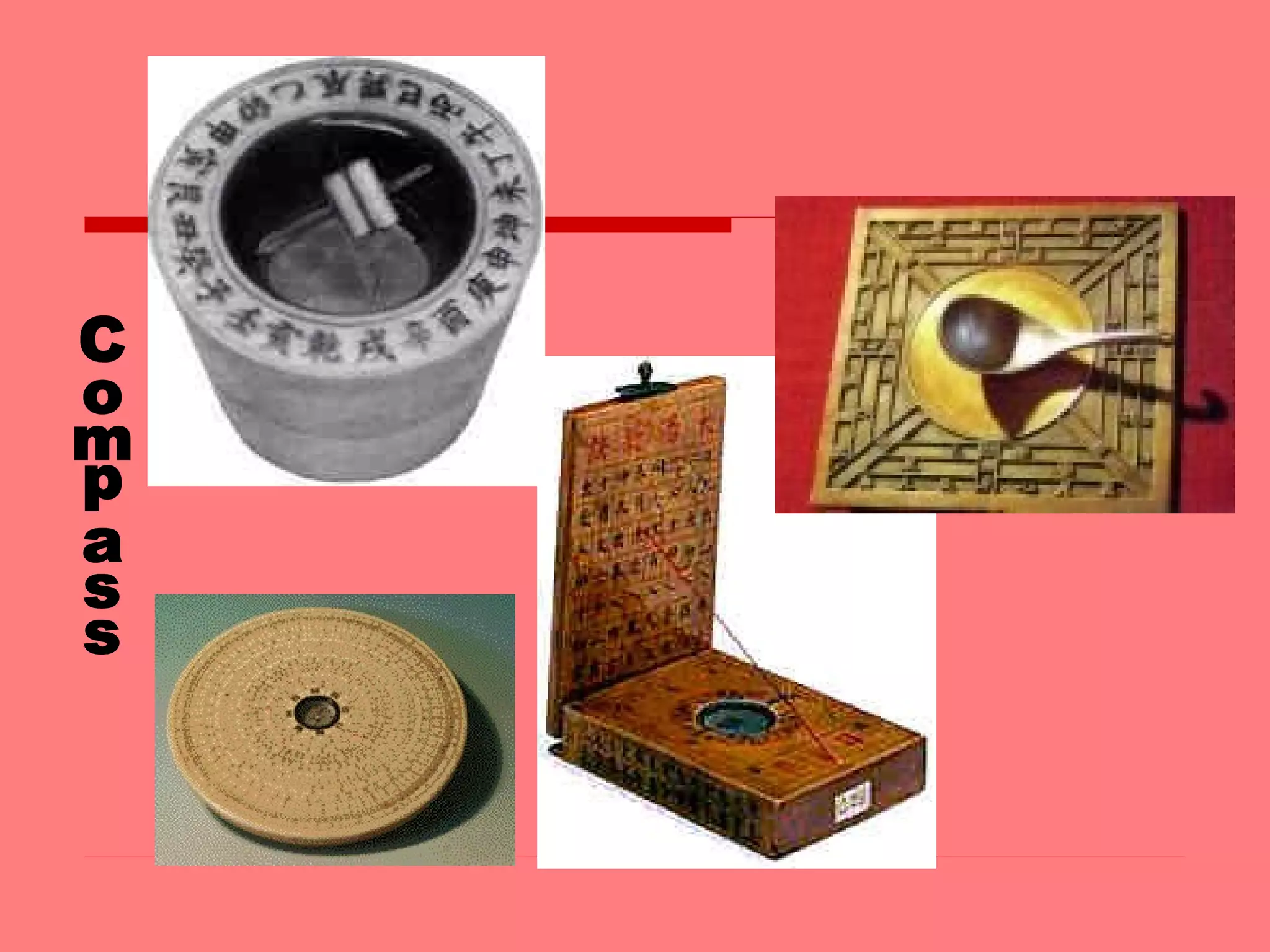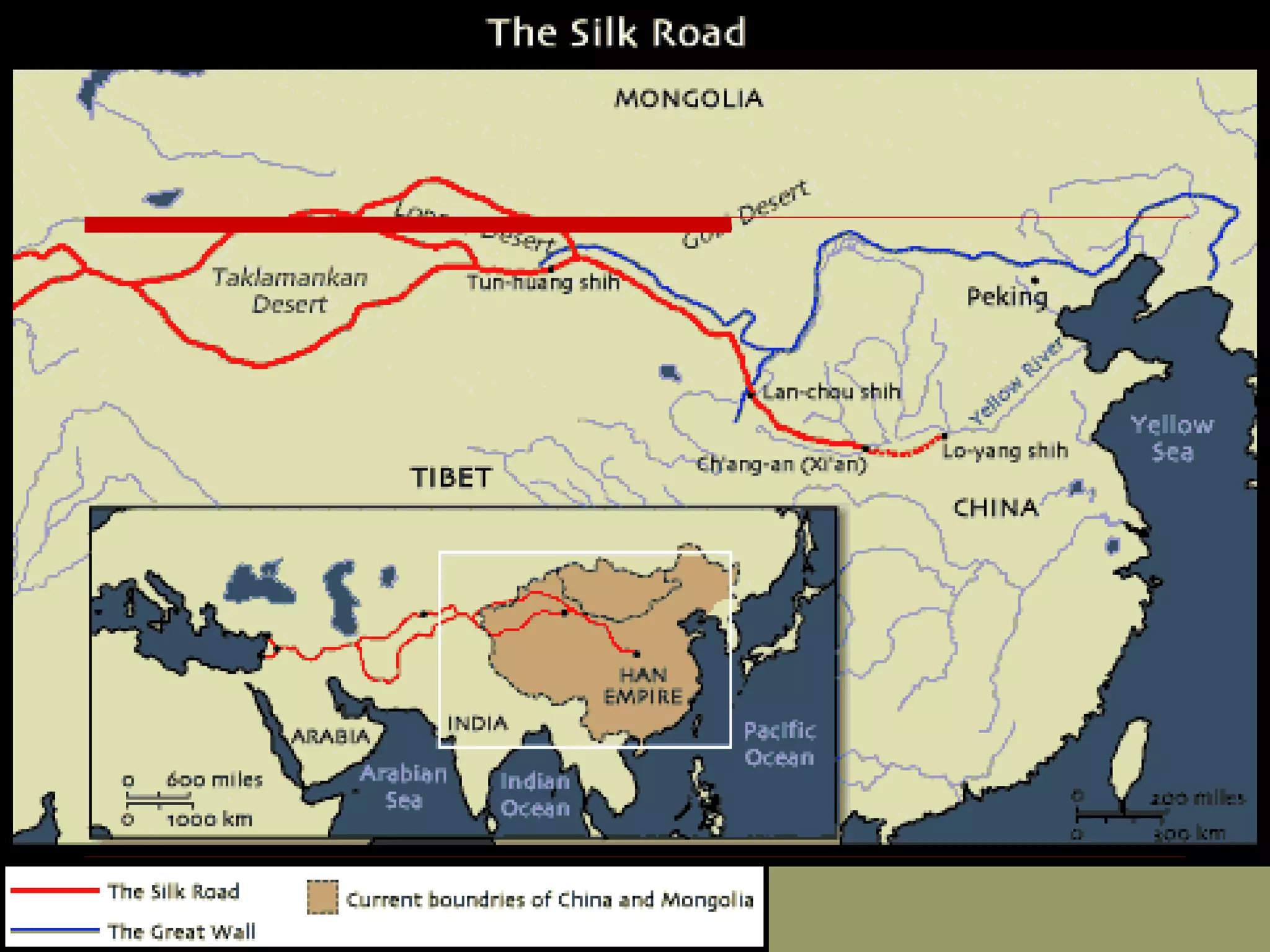1) China has one of the world's oldest continuous civilizations dating back to around 1500 BC along the Yellow River and Yangtze River valleys.
2) Early dynasties included the Shang Dynasty which established the first Chinese civilization, and the Zhou Dynasty which expanded Chinese rule and developed the concept of the Mandate of Heaven.
3) The Qin Dynasty in the 3rd century BC was the first to unify China under an emperor, standardizing laws, currency, and language.
4) The long-lasting Han Dynasty expanded China territorially and economically along the Silk Road, though it eventually collapsed due to corruption and loss of control.



